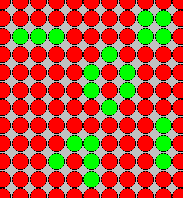
Paul Grobstein
Eleanor A. Bliss Professor of Biology, Bryn Mawr College
Past Director, Bryn Mawr College Center for Science in Society
Serendip co-founder


| Paul GrobsteinEleanor A. Bliss Professor of Biology, Bryn Mawr College Past Director, Bryn Mawr College Center for Science in Society Serendip co-founder | 
|
| Academia | Publications | Courses | Web Activity | Contact Info |
| Current Explorations (in blog format) | Curriculum Vita (Word file) |
I'm a neurobiologist, educator, and parent with a life-long interest in understanding why people behave the way they do, and how they can continually expand their capabilities.
I've done laboratory research on the organization and development of the nervous systems of crayfish, rabbits, leeches, and, most extensively, frogs, where the work focused on the nature of spatial representations. and the origins, organization, regulation, and significance of unpredictability in neuronal function and behavior. This research related as well to several broader questions, including the distinction between conscious and unconscious processing, and the nature of individual choice and free will.
 I'm also a biologist and philosopher, with an array of more general interests in the underpinnings of human behavior, the nature of biological, cultural, and intellectual change, complex systems and general information processing principles, and the character of human understanding and the relationships among its different forms. In recent years, I've come to think of myself as an "applied neurobiologist", and devoted much of my time to thinking about the implications of current and anticipated understandings of the brain for a variety of practical and philosophical issues, including mental health, child-rearing, political decision-making, and education. Associated with this is a strong commitment to improving the educational environment at all levels and for all people.
I'm also a biologist and philosopher, with an array of more general interests in the underpinnings of human behavior, the nature of biological, cultural, and intellectual change, complex systems and general information processing principles, and the character of human understanding and the relationships among its different forms. In recent years, I've come to think of myself as an "applied neurobiologist", and devoted much of my time to thinking about the implications of current and anticipated understandings of the brain for a variety of practical and philosophical issues, including mental health, child-rearing, political decision-making, and education. Associated with this is a strong commitment to improving the educational environment at all levels and for all people.
I am, in addition, an active explorer of the opportunities being made available by the development of computing technology, and of the internet and the web. With a number of colleagues, I co-founded and continue to develop the Serendip website as a venue for explorations of new directions for the development of human culture that are being opened up by the world wide web.
Common to all these activities is a strong belief in the capabilities of the human brain to explore and create, both individually and collectively, in ways that achieve improved understandings of the human condition and open new avenues for its further development. And a belief that modern information technology, including the web, is a distinctive and valuable tool for the extension of human understanding.